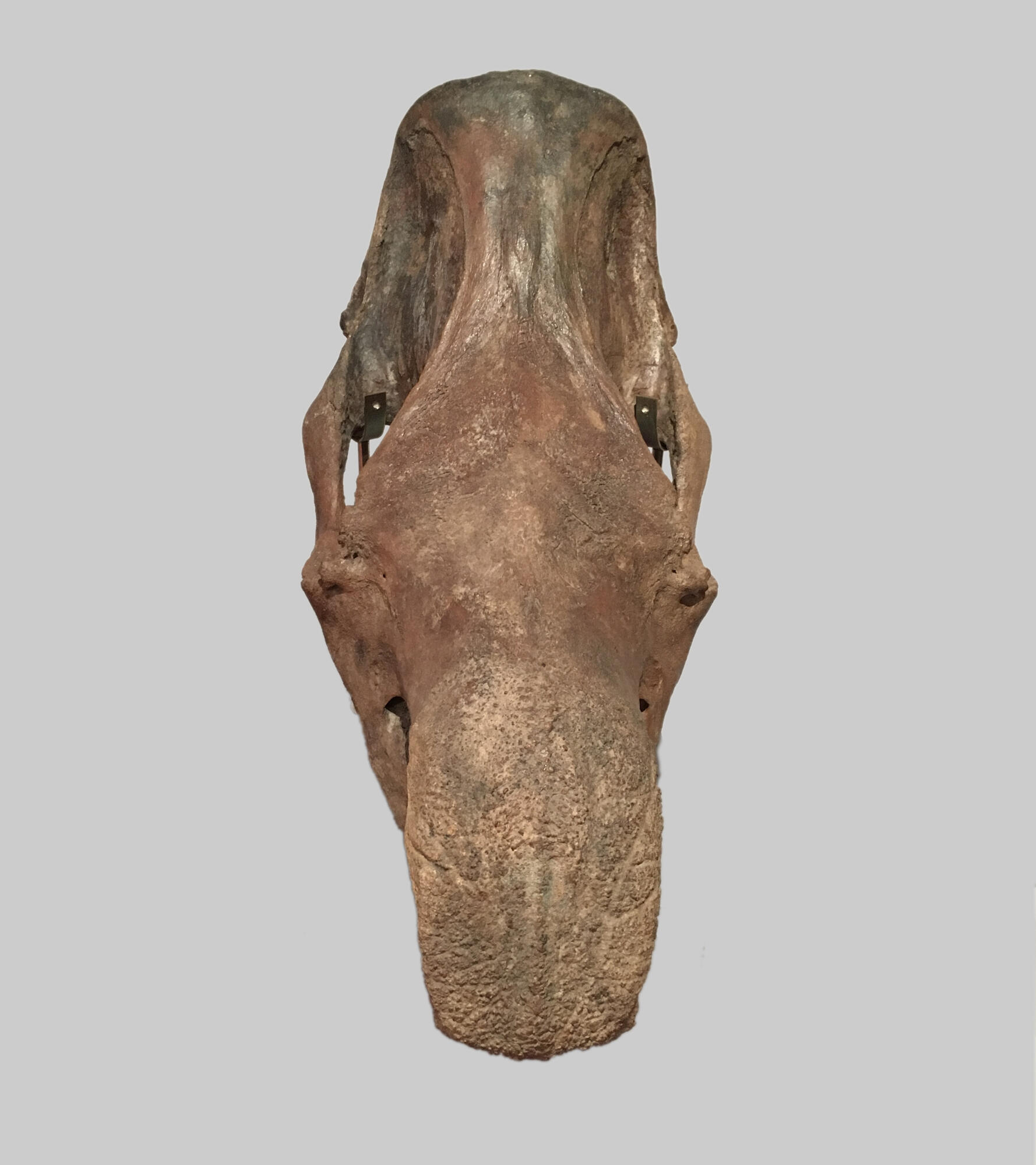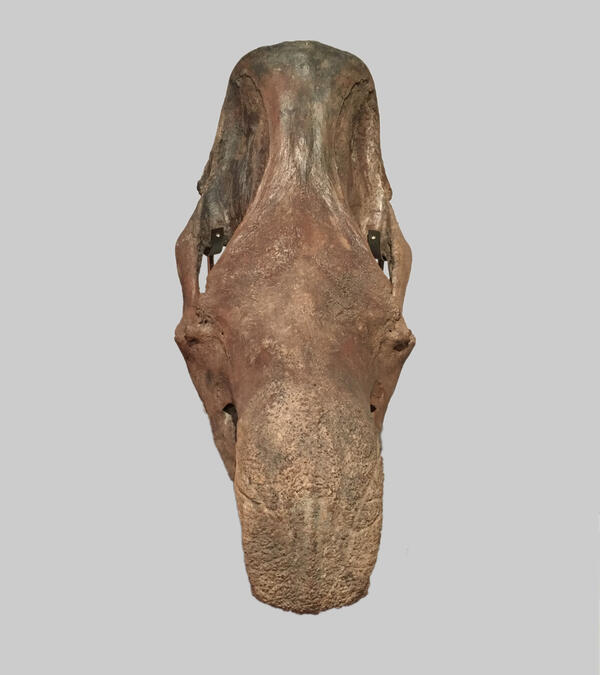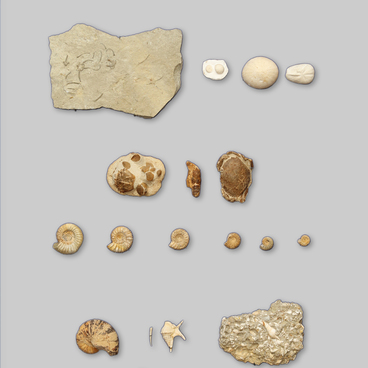The woolly rhinoceros is an extinct animal species. Representatives from this species lived in the vast, open spaces of Europe and Asia during the glacial period, and disappeared 10,000 years ago. Woolly rhinoceroses were excellently adapted to freezing temperatures. Their long, thick, woolly coats covered virtually the animal’s entire body, including its tail. A coarse hide with a thickness ranging from 5 to 15 millimeters served as protection not only from predators, but also from very low temperatures. The ears of fossilized rhinoceroses were small, and this reduced evaporation and heat loss. For the sake of comparison, modern tropical species that live at hot latitudes have ears that reach up to 30 centimeters, and the maximum length of the ears in ancient species in northern climes did not exceed 24 centimeters.
Both male and female prehistoric rhinoceroses had two horns. They were not made of bone, but of the same corneous substance that makes up nails and hair, and had a structure similar to that of hooves. The first horn was long, up to 1.4 meters, and weighed up to 15 kilograms. The second one was twice as small.
Due to the massiveness of their bones, and the permafrost conditions in northern climates where rhinos were found thousands of years ago, their remains have survived well-preserved for researchers to this day.
Quite a few finds of mummified rhinoceroses have allowed scientists to learn more about the diet that these extinct giants had. For example, it came to light that rhinoceroses plucked grass with their upper lip. They ate coarse vegetation: grasses, grains, and the branches of shrubs and trees. Scientists have discovered the remains of twigs from dwarf birch, fir, spruce, larch, and wormwood between the teeth in the rhinoceroses’ jaws that have been excavated.
The extinction of the woolly rhinoceros began when the climate warmed up, and warm winters led to an increase in humidity and the snow cover. If the snow layer exceeded 40 centimeters, then the rhinos got stuck in it up to their belly area, and became helpless. There were also natural traps that posed a danger for them - voids left after ice veins melted, or the boggy shores of kettle lakes. Most of the rhinoceros bodies found have something to do specifically with the animals dying in these pits under the snow and ice.
Climate change contributed to the decrease in the number of woolly rhinoceroses, but it is possible that hunting activities performed by Stone Age humans could have played a role in accomplishing the complete extinction of this species.
Both male and female prehistoric rhinoceroses had two horns. They were not made of bone, but of the same corneous substance that makes up nails and hair, and had a structure similar to that of hooves. The first horn was long, up to 1.4 meters, and weighed up to 15 kilograms. The second one was twice as small.
Due to the massiveness of their bones, and the permafrost conditions in northern climates where rhinos were found thousands of years ago, their remains have survived well-preserved for researchers to this day.
Quite a few finds of mummified rhinoceroses have allowed scientists to learn more about the diet that these extinct giants had. For example, it came to light that rhinoceroses plucked grass with their upper lip. They ate coarse vegetation: grasses, grains, and the branches of shrubs and trees. Scientists have discovered the remains of twigs from dwarf birch, fir, spruce, larch, and wormwood between the teeth in the rhinoceroses’ jaws that have been excavated.
The extinction of the woolly rhinoceros began when the climate warmed up, and warm winters led to an increase in humidity and the snow cover. If the snow layer exceeded 40 centimeters, then the rhinos got stuck in it up to their belly area, and became helpless. There were also natural traps that posed a danger for them - voids left after ice veins melted, or the boggy shores of kettle lakes. Most of the rhinoceros bodies found have something to do specifically with the animals dying in these pits under the snow and ice.
Climate change contributed to the decrease in the number of woolly rhinoceroses, but it is possible that hunting activities performed by Stone Age humans could have played a role in accomplishing the complete extinction of this species.



